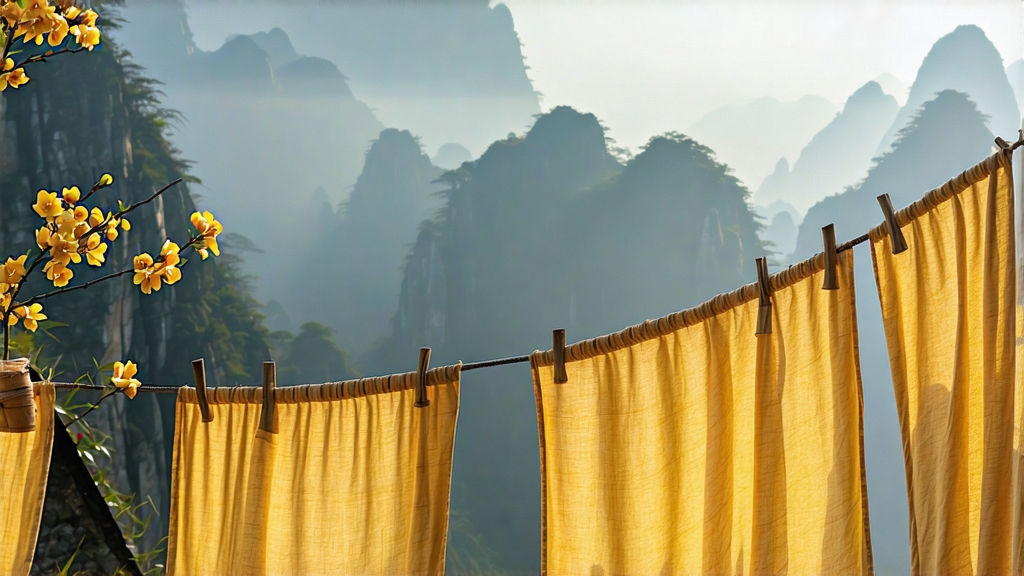
Tucked high in the mist-veiled Dabie Mountains of western Anhui Province, Huoshan Huangya has quietly embodied the elegance of China’s rarest tea family for more than fourteen centuries. While green, black and oolong teas travel the globe in glossy tins, yellow tea—huang cha—remains a well-kept secret, and within that secret Huoshan Huangya is the crown jewel once reserved for Tang, Song and Ming emperors. To understand it is to witness a living time-capsule of Chinese craftsmanship, terroir and courtly ritual.
Historical whispers
The first reliable mention appears in the Tang Dynasty “Classic of Tea” (c. 780 CE) where Lu Yu praises “Huoshan yellow slices.” By the Song court the leaves were pressed into silver-foil cakes and freighted down the Yangtze as spring tribute; Ming Taizu later exempted the county from grain tax in exchange for 200 jin of the bud-tip tea. European texts of the 19th century list it as “Imperial Yellow Bud,” commanding more than double the price of Keemun black. Revolution, war and market neglect pushed it to the edge of extinction; only a handful of village families kept the yellowing skill alive in bamboo sheds. Revived in 1972 as a state gift for Japanese diplomats, Huoshan Huangya regained protected-origin status in 2008, yet annual production still hovers below fifteen hundred kilos—rarer than Darjeeling’s first flush across all gardens.
Terroir and cultivar
The micro-zone lies at 31°N, 600–800 m elevation, where the Dabie range funnels humid air into a natural cloud chamber. Days are cool and short; nights drop 10 °C, slowing oxidation and stacking amino acids. Soils are yellow-brown granite loam, acidic (pH 5.2) and laced with selenium leached from gneiss bedrock. Only two clones are sanctioned for true Huangya: the local “Huoshan early bud” (a narrow-leaf sinensis var. sinensis) and the even rarer “金鸡种” golden-hen cultivar whose spring tips emerge citrine-coloured rather than the usual lime-green. Farmers prune the bushes into shallow arcs that hug the terraces, maximising fog contact and discouraging coarse growth.
Plucking etiquette
The harvest window opens for barely ten days around Qingming festival when each bud still shelters a single unfurling leaf—what locals call “one flag, one spear.” Pickers work between 5 a.m. and 9 a.m. while dew beads act as natural polish; any later and mountain sun reddens the tips. A seasoned plucker gathers barely 500 g of fresh material per hour, the equivalent of 100 g finished tea after the elaborate yellowing journey.
Craft: the art of “men huang”
Yellow tea’s signature is the slow enzymatic oxidation that occurs after kill-green yet before full drying. In Huoshan this stage is men huang—literally “sealed yellowing”—and masters guard their timing like vintners watch barrels.
- Sha Qing (Kill-green): 220 °C bamboo woks, 4–5 min. The goal is to arrest vegetal greenness while leaving 10–12 % moisture so enzymes survive. A tell-tale crackling “popcorn” note signals the exit point.
- Re-wrap Pile: the scorched leaves are immediately scooped into linen bags (ten layers thick) and stacked inside a bamboo steam chest. Core temperature hovers at 35–40 °C for 4–6 h; the pile is turned every 45 min to prevent souring. Chlorophyll degrades into pheophytin, catechins dimerise, and a mellow orchid note emerges.
- Primary Fire: gentle charcoal baskets (60 °C) reduce moisture to 20 %. Leaves are hand-rolled into tight needle shapes; the surface turns matte gold.
- Second Men Huang: the most guarded step. Bundles rest inside calfskin-lined wooden boxes for 36–48 h at 28 °C, 85 % RH. A faint yellow bloom—tiny fungal spores—may appear; masters call it “golden frost” and consider it auspicious. This slow fermentation edges the tea toward black yet stops short, gifting the liquor its honeyed thickness.
- Foot-drying: